Mules of the Pax Coinage of Trebonianus Gallus
In every place I have read about the coinage of Trebonianus Gallus, it is stated that each of the common reverse types are either normal to Gallus, or normal to Volusian, but not both (sestertii with the Temple of Juno are an exception to this rule). It is generally stated or implied that coins of a specific emperor that have reverses not normal to him (for example a Trebonianus antoninianus with the temple of Juno reverse) are the result of accidental die pairing and are essentially mules, made somewhat more common because they are contemporary dies.
The PAX-AVGG coinage of Gallus and Volusian would seem to follow this idea, but I have discovered that the 'mules' are not random, and are primarily made up of a single die or a closely related set of dies.
Antoninianii
For all of these coins, RIC describes them as "Pax stg. l., holding branch and transverse sceptre." RIC does note (Gallus RIC-55n) that the British Museum has a Gallus antoninianus with the minor variant of Pax holding an upright scepter (vice transverse). What is interesting is that while this is unusual for Pax, virtually all the antoninianii of Gallus have this feature even though this reverse is proper to Volusian, and of the hundreds of Volusian coins I have seen, I have seen this 'upright scepter' die variant only twice (once with PIVS legend, once with the normal Volusian legend) which means it is normal for Gallus (though rare) and a mule for Volusian (and extremely rare).
Here is the data from the Eauze Hoard on these types (but please also continue down the page to see conclusion):
| Trebonianus Gallus | * | Notes | * | Volusian |
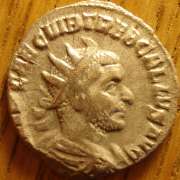 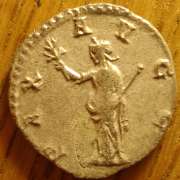 |
1 | PAX AVGG Pax raising palm branch and holding transverse scepter
|
57 | 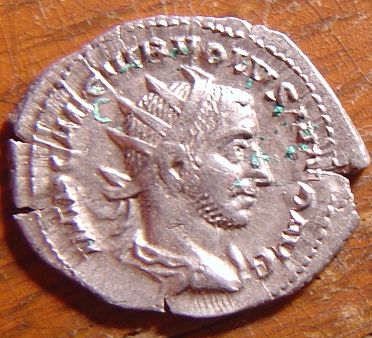 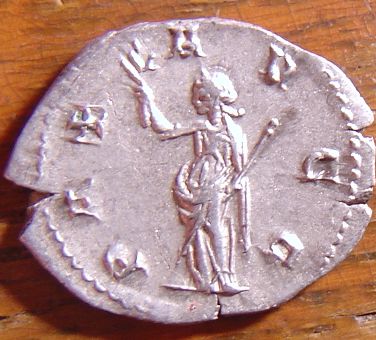 |
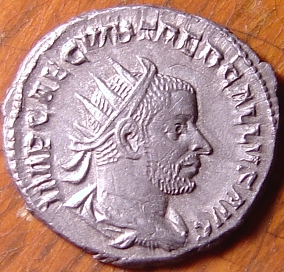 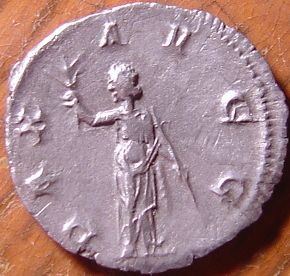 |
7 | PAX AVGG Pax raising palm branch and holding upright scepter | 0 |
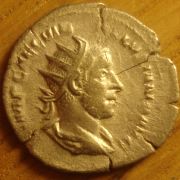 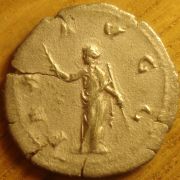 |
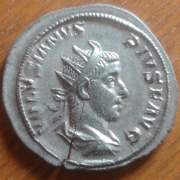 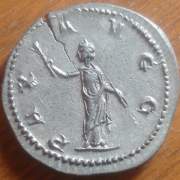 |
| Totals | 8 | 57 |
* Number of coins in the Eauze Hoard (other hoard literature does not differentiate between the two types o Pax reverse coins).
Here's something interesting: Gallus coins with obverse legend breaks (large spaces between parts legend) are extremely rare - I have only seen three in person:
| Unlisted extremely rare coin of Volusian with special issue reverse of Gallus (I only know of this coin). |
  |
| Very rare obverse legend ( I only know of this example) |
  |
| This coin has a rare reverse (RIC55n) but the obverse is
apparently unique with obverse legend letters spaced in groups.
Also the only known example In the collection of my good friend T.C. |
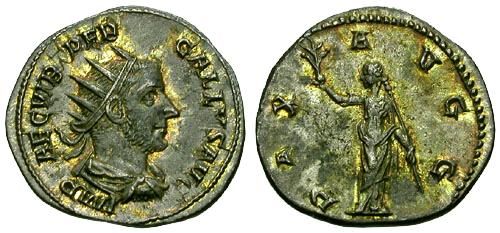 |
| I find it very interesting that these three apparently unique coins all have split legends and all have the same reverse - clearly this was part of some special issue and it has something to do with super-rare Gallus/Volusian PIVS coins which are a mystery - known has been able to find the right placement of their issue among the regular mint productions |
Sestertii
With only the case above this might seem a fluke, but amazingly, the bronze coins follow a similar pattern. As with the silver coins, all sestertii of Gallus and Volusian with Pax are described of as "Pax stg. l., holding branch and transverse scepter." But there is one minor variant. Pax normally raised the palm branch, but a very few coins, Pax points the branch toward the ground. Once again the vast majority of Pax coins are of Volusian, yet amazingly, the odd position of PAX appears only on the sestertii of Gallus.
| Trebonianus Gallus | ** | Notes | ** | Volusian |
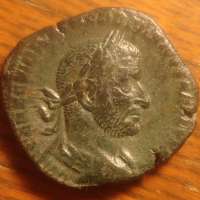 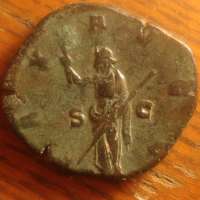 |
12 | PAX AVGG SC Pax raising palm branch and holding transverse scepter | 187 | 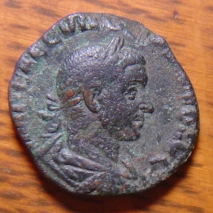 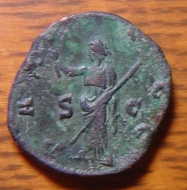 |
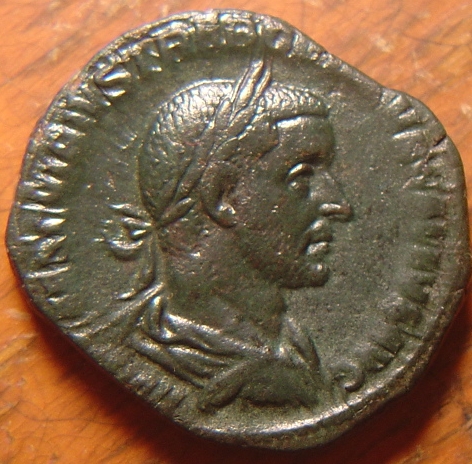 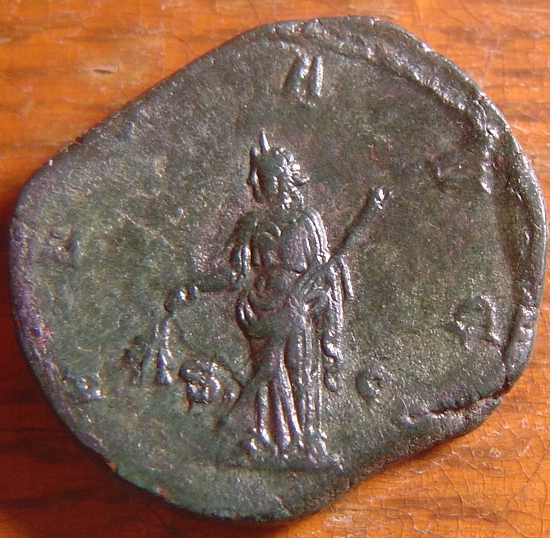 |
22 | PAX AVGG SC Pax lowering palm branch and holding transverse scepter | 0 | Unable to find a picture of: Obverse: Volusian Reverse: Pax w/ branch down Coin may not exist |
| Totals | 10 | 91 |
** Number of coins in my photofile
Bad metal and fourees
One final note about the mule coins of Trebonianus Gallus and Volusian: An abnormally high percentage of the antoninianii 'mules' are of either poor quality metal, or are fourees. This is very clear to me from handling many of these coins, and it can be seen by reading the footnotes to RIC, where many of the mules are noted as being of bad metal. Clearly, the mules of bad metal were made at a different time than the normally issued coins, and care was not shown to ensure that Gallus dies were not mixed with those of Volusian. Because the dies are official, and the bad metal issues are of significant volume, I believe that they are part of a government-sanctioned issue late in Gallus reign when the financial, military, and political situation became critical (much as seen by the last issue of Gallus in Antioch).
Conclusion
Most instances where a reverse normal to one emperor (Gallus of Volusian) appears on the coin of the other emperor are not just random errors. In the case of Pax, both the silver and bronze coins feature a significantly different design that is unique to Gallus, even though the type is not considered 'his' by RIC. It is likely that these minor variations are not even part of the same issue at all.
Additionally many of the mules are of different fabric or use different dies than those used at the Rome and Branch mints, and the fact that they mix dies may be a result of official or unofficial reuse of dies at a later time, with poor metal, and an understandably lesser concern for strict adherence to the originally prescribed die arrangement, perhaps even a situation similar to the mad rush to produce antoninianii in Antioch, in the Spring of A.D. 253.
If you have ideas, or amplifying evidence, or if you can correct any of my statements, please let me know - it will be much appreciated. rbeale@sonic.net